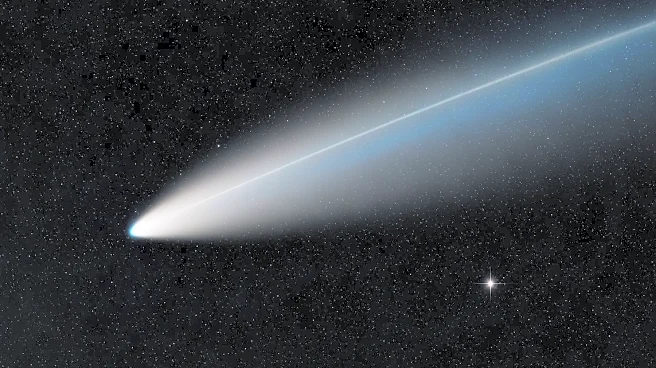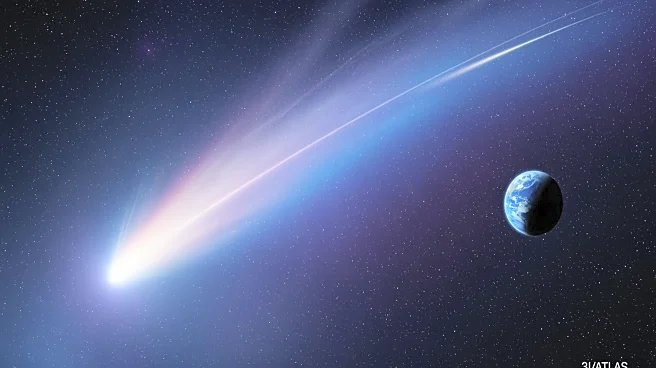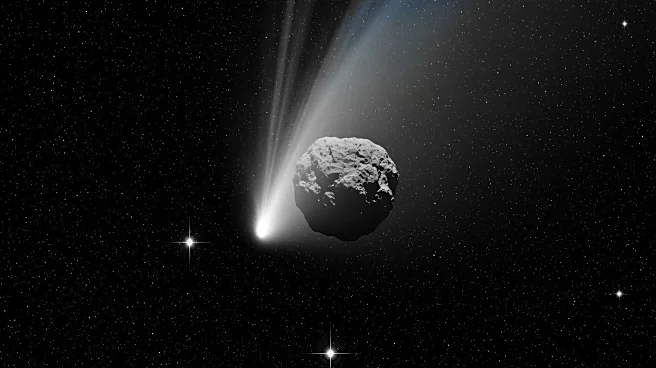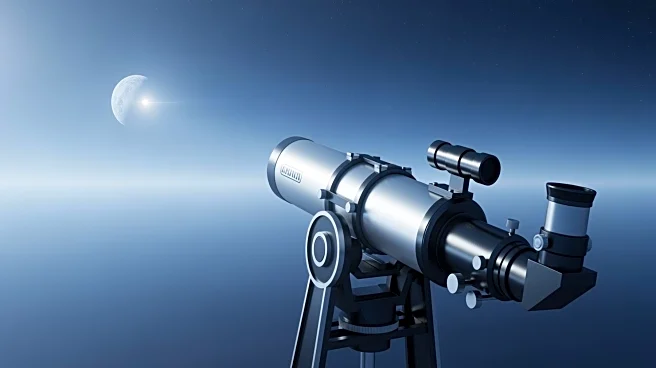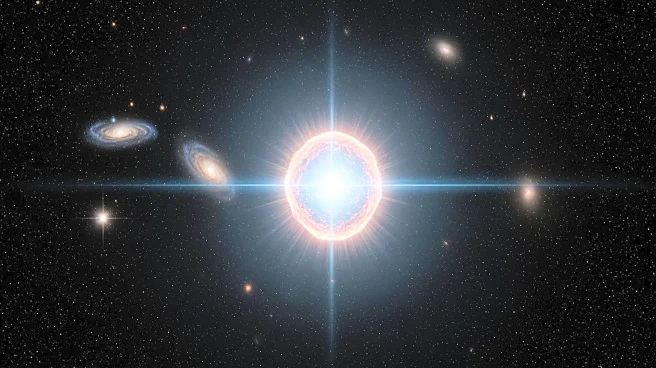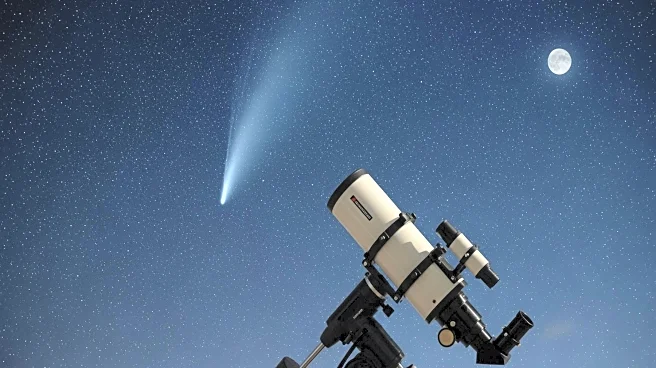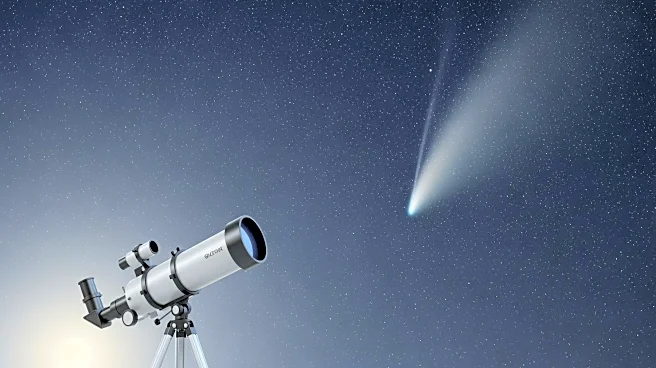What's Happening?
NASA has confirmed Comet 3I/ATLAS as an interstellar object, marking it as the third such visitor from outside our solar system. The comet is traveling on a hyperbolic trajectory, indicating it is not
gravitationally bound to the Sun and will eventually leave the solar system permanently. It made its closest pass to the Sun, known as perihelion, at a distance of approximately 1.36 astronomical units, or over 200 million kilometers. Despite its proximity, the comet remains hidden in solar glare, making it impossible to observe from Earth even with large telescopes. It is expected to become visible again around November 11, but only through large telescopes.
Why It's Important?
The identification of Comet 3I/ATLAS as an interstellar object is significant for astronomers and scientists studying the cosmos. It provides a rare opportunity to observe and analyze materials from outside our solar system, potentially offering insights into the formation and composition of other celestial bodies. The comet's trajectory and characteristics could enhance understanding of interstellar travel and the dynamics of objects entering and exiting the solar system. For the scientific community, this event underscores the importance of ongoing space observation and research initiatives.
What's Next?
Astronomers and researchers will continue to monitor Comet 3I/ATLAS as it becomes visible again in the eastern sky before dawn around November 11. Observations will require large telescopes due to the comet's faint visibility. Scientists may focus on gathering data on its composition and trajectory to better understand interstellar objects. The comet's passage may also prompt discussions on the potential for future interstellar exploration missions, leveraging the insights gained from this observation.
Beyond the Headlines
The discovery of Comet 3I/ATLAS raises questions about the frequency and nature of interstellar visitors to our solar system. It may lead to increased interest in developing technologies and methodologies for detecting and studying such objects. Additionally, the event highlights the collaborative efforts of global astronomical surveys and the importance of international cooperation in space exploration.
